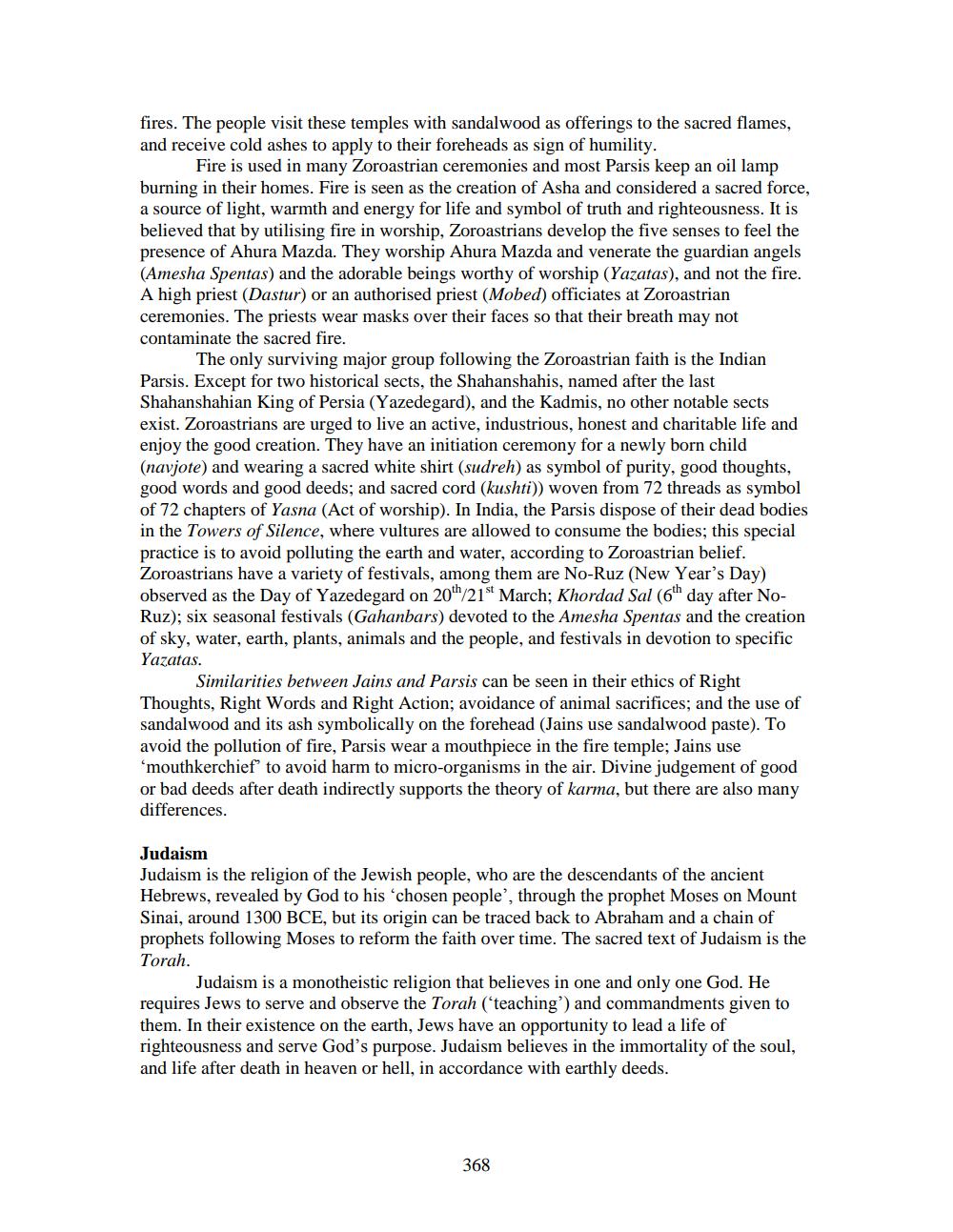________________
fires. The people visit these temples with sandalwood as offerings to the sacred flames, and receive cold ashes to apply to their foreheads as sign of humility.
Fire is used in many Zoroastrian ceremonies and most Parsis keep an oil lamp burning in their homes. Fire is seen as the creation of Asha and considered a sacred force, a source of light, warmth and energy for life and symbol of truth and righteousness. It is believed that by utilising fire in worship, Zoroastrians develop the five senses to feel the presence of Ahura Mazda. They worship Ahura Mazda and venerate the guardian angels (Amesha Spentas) and the adorable beings worthy of worship (Yazatas), and not the fire. A high priest (Dastur) or an authorised priest (Mobed) officiates at Zoroastrian ceremonies. The priests wear masks over their faces so that their breath may not contaminate the sacred fire.
The only surviving major group following the Zoroastrian faith is the Indian Parsis. Except for two historical sects, the Shahanshahis, named after the last Shahanshahian King of Persia (Yazedegard), and the Kadmis, no other notable sects exist. Zoroastrians are urged to live an active, industrious, honest and charitable life and enjoy the good creation. They have an initiation ceremony for a newly born child (navjote) and wearing a sacred white shirt (sudreh) as symbol of purity, good thoughts, good words and good deeds; and sacred cord (kushti)) woven from 72 threads as symbol of 72 chapters of Yasna (Act of worship). In India, the Parsis dispose of their dead bodies in the Towers of Silence, where vultures are allowed to consume the bodies; this special practice is to avoid polluting the earth and water, according to Zoroastrian belief. Zoroastrians have a variety of festivals, among them are No-Ruz (New Year's Day) observed as the Day of Yazedegard on 20th/219 March; Khordad Sal (6th day after NoRuz); six seasonal festivals (Gahanbars) devoted to the Amesha Spentas and the creation of sky, water, earth, plants, animals and the people, and festivals in devotion to specific Yazatas.
Similarities between Jains and Parsis can be seen in their ethics of Right Thoughts, Right Words and Right Action; avoidance of animal sacrifices; and the use of sandalwood and its ash symbolically on the forehead (Jains use sandalwood paste). To avoid the pollution of fire, Parsis wear a mouthpiece in the fire temple; Jains use 'mouthkerchief to avoid harm to micro-organisms in the air. Divine judgement of good or bad deeds after death indirectly supports the theory of karma, but there are also many differences.
Judaism Judaism is the religion of the Jewish people, who are the descendants of the ancient Hebrews, revealed by God to his chosen people', through the prophet Moses on Mount Sinai, around 1300 BCE, but its origin can be traced back to Abraham and a chain of prophets following Moses to reform the faith over time. The sacred text of Judaism is the Torah.
Judaism is a monotheistic religion that believes in one and only one God. He requires Jews to serve and observe the Torah (teaching') and commandments given to them. In their existence on the earth, Jews have an opportunity to lead a life of righteousness and serve God's purpose. Judaism believes in the immortality of the soul, and life after death in heaven or hell, in accordance with earthly deeds.
368




